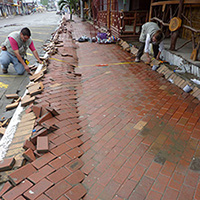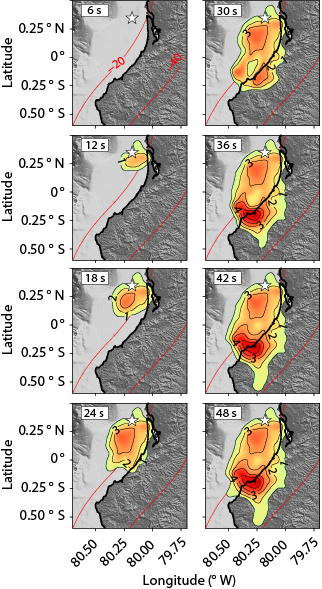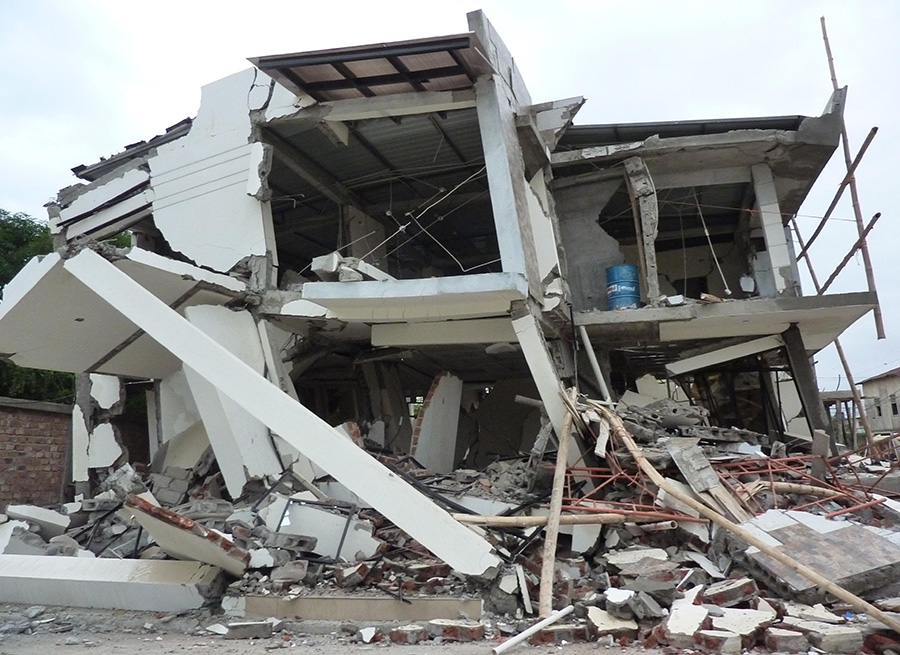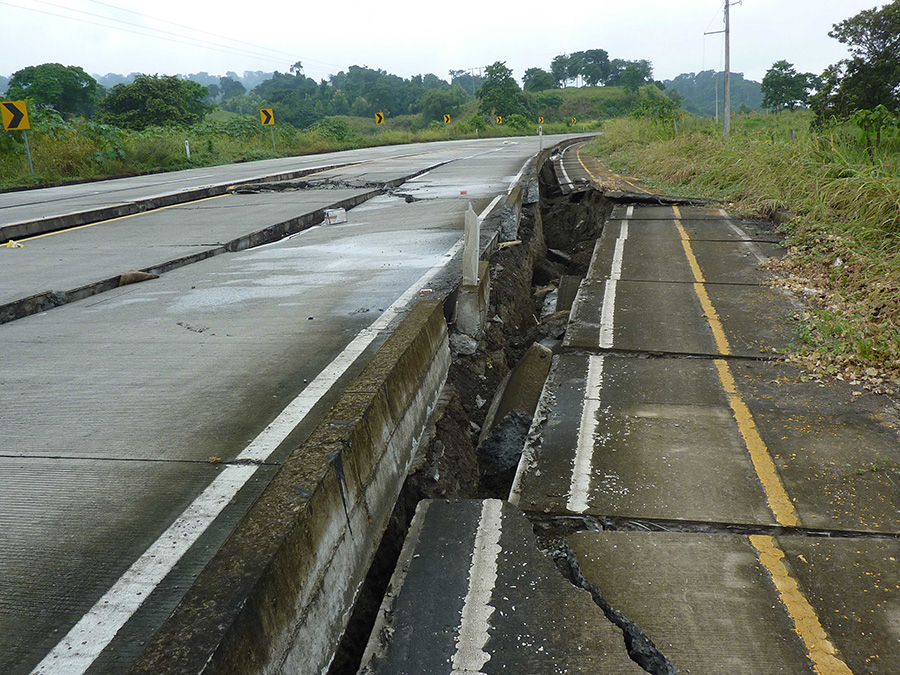The Joint International Laboratory (French acronym LMI) SVAN2 has four objectives:
|
1/ Better understand the phenomena that control telluric hazardsThe LMI SVAN2 (Séismes et Volcans dans les Andes du Nord) program extends research and educational activities that began in the 1990s and were firstly enhanced by the SVAN1 program. First of all, it aims at completing the necessary research for a better understanding of seismic and volcanic hazards in the Northern Andes. The first step of the LMI carried out from 2012 to 2016, enabled to address several major issues such as: defining the high-risk earthquake zones along the subduction fault and on land; and determining the spatial and temporal evolution of the southern part of the volcanic arc. Hence, today our ambition lies on the input of the new knowledge into general hazard models, in the field of seismology as well as volcanology. Regarding seismology issues, actions are mainly included into the REMAKE project “Seismic Risk in Ecuador: Mitigation, Anticipation and Knowledge of Earthquakes” (PI P. Charvis, Geoazur) supported by the French Research Funding Agency ANR with a 500 k€ contribution over the 2016-2020 period. Besides, the Pedernales earthquake of 16 April 2016 has provided scientists with a new perspective for further observation and investigation over many years: in the weeks following the event, dense and steady observation was enabled by the IRD and CNRS (French National Center for Scientific Research) funding. Today, the analysis of the latter data and interpretation regarding the earthquake cycle and future related hazards are the backbone of the LMI SVAN2 research program. |
Fig. Mw 7.8 2016 Pedernales earthquake: Snapshots of cumulated slip every 6 s, color coded and with contour intervals every meter (Nocquet et al., 2016) – Red lines are depth contours of the subduction interface every 20 km. Green to red colors show extent and amount of coseismal slip (scale from 1 to 7 m) with contour intervals every meter. The white star shows the epicenter location from the study (longitude 80.17° W, latitude 0.35° N) – https://doi.org/10.1038/ngeo2864 |
2/ Programming innovative projects combining Geoscience and Humanities for Development goalsSimultaneously, our program aims at building up common projects at the interface between Geoscience and Social science, to facilitate the transfer of our research results to Andean societies. For the seismology part, local initiatives will be developed in Quito and Ambato, which are two major cities at high risk of being damaged by a large earthquake, so that knowledge transfer and integration of seismic hazard into public policies can be implemented. Such a request was made by our partner IG-EPN in Ecuador who first took actions with new fellows who are experts in the relevant sectors. After pilot initiatives undertaken under the pioneer program SVAN1, we supplement research areas with the study of volcano-society relationships, by combining volcanological appraisal with socioeconomic impact analysis related to volcanic activity in Ecuador and the Northern Andes. The goal is to produce deliverables that will enhance short-term and long-term volcano risk management. Finally, our working plan on active volcanoes in the Northern Andes is to provide skilled expertise during a crisis. For active volcanoes in the Northern Andes represent unparalleled laboratories worldwide for studying volcano-body-population relationships in-situ.
3/ Founding a Doctoral School at the EPNBeyond research and science issues, the SVAN2 project intends to contribute to the founding of a Doctoral School at the EPN. Following the 1990s partnerships, several former doctoral fellows have taken jobs at the EPN. At the present time, additional former students are still expected that will let the EPN reach the Doctor “critical mass” that allows providing higher education training, awarding the Master’s Degree, as well as creating a Doctoral program in Earth Science. One of the prospects of the SVAN2 program is supporting the process of educational development. |
|
4/ Strengthen North and South teams to foster inter-regional cooperation (North Andes)Moreover, the SVAN2 project benefits from the coming of new researchers in the LMI, which enables to develop new research lines that are relevant to seismic and volcanic hazard issues, especially: the analysis of marine terrace uplift caused by subduction processes (M. Saillard, CR IRD, Geoazur); and the study of subduction zone paleoearthquakes (G. Ratzov, MdC; A. Sladen, CR CNRS; S. Migeon, PR Geoazur). Those research works will allow strengthening partnerships with institutions such as INOCAR and ESPOL. Humanities and Social Sciences partnerships will be achieved through ANR REMAKE, and LabEx ClerVolc regarding the analysis of volcanic eruption impact (J. Rebotier, CR CNRS, Université Pau). |
Beyond the aforementioned diversification of research topics, which aims solely at providing better analysis of telluric hazards and related vulnerability, the LMI SVAN2 program encompasses activities promoting South-South and triangular interactions through exchanges, training actions (e.g. Summer Schools), and mutual support, especially in the case of earthquake or volcanic eruption crises. Building on its multiple networks and skills, the LMI SVAN2 will ultimately be able to address telluric hazard issues with a high level of competence, and help our Ecuadorian partner consolidate its position as the leader in earthquake and volcano risks for the Andes and South America regions. |









